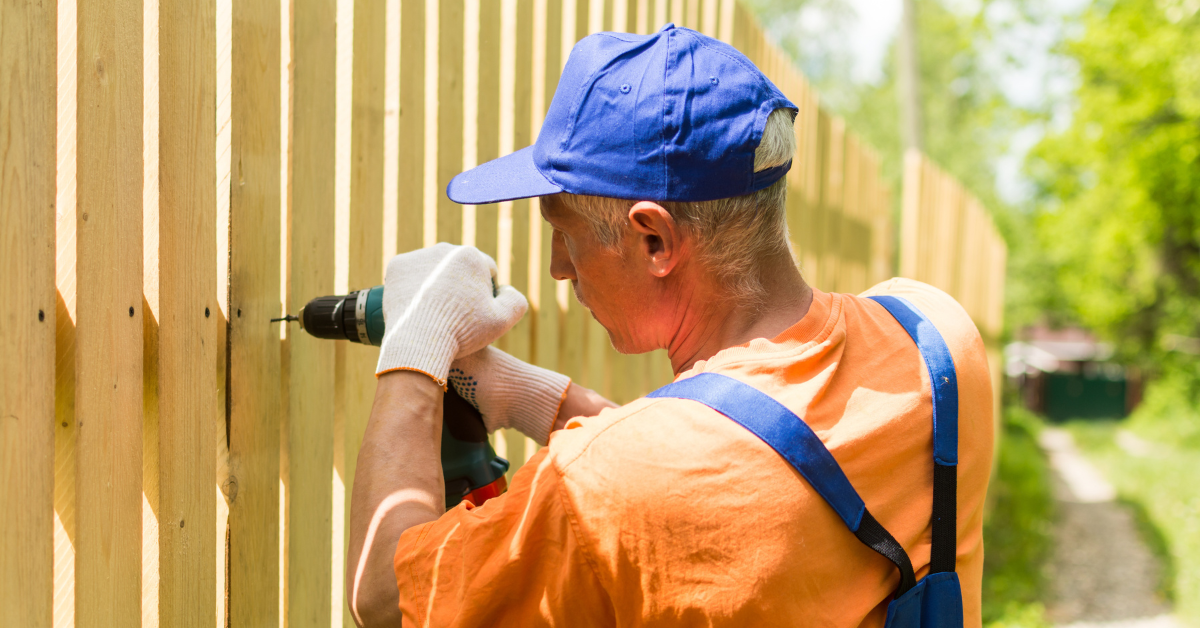Your fence provides security and privacy for your home; but what happens when it's damaged? Does your homeowners insurance cover the cost of repairs or replacement? The answer isn't always straightforward.
While home insurance can protect many types of property damages, the extent of coverage for fences can vary based on specific circumstances and your specific policy’s terms.
This blog post will explore the common scenarios where homeowners insurance may cover fence damage—and the situations where it likely won't.
At a glance:
- Homeowners insurance may cover fence damage depending on the cause of the damage and the specific terms of your policy.
- Understanding your policy's coverage limits, deductibles, and exclusions is crucial for determining if your fence damage is covered.
- Properly maintaining your fence and taking preventative measures can help ensure that potential damage is covered by your insurance.
When is fence damage covered by home insurance?
Homeowners insurance can provide financial protection for damage to your fence, but understanding the specific circumstances under which coverage applies is critical.
Covered events for fence damage
Homeowners insurance typically covers fence damage if it's caused by a covered peril, such as:
- Vehicle collisions
- Storm damage
- Vandalism
- Fire or smoke damage
Fence coverage typically falls under the other structures portion of your policy, which typically has a lower coverage limit. In many cases this can be limited to 10% of your dwelling coverage, which is why it’s important to understand the ins-and-outs of your policy’s coverage limits.
Your fence must be kept in a reasonably well-maintained state. Poor upkeep may void coverage so it's important that homeowners take care of their fences.
Be sure to carefully read your policy's terms and conditions. If you are still seeking information or clarity, contact your home insurance agent and they can help explain your coverage and answer any specific questions you have.
Examples of situations covered by home insurance
Understanding the specific scenarios in which your homeowners insurance will cover fence damage is essential. The examples listed below will help you better grasp the scope of your coverage and make informed decisions regarding your property's protection, but by no means include all covered perils:
- Severe storms—Strong wind gusts can topple fences, snap posts, or tear apart fencing materials. Large hailstones can puncture or dent wooden, vinyl, or wire fences. Powerful storms can cause significant damage to fences, including complete destruction.
- Fire—Burning embers from fires, such as if your dwelling catches fire, can spread to and damage your fence.
- Vandalism—While minor, graffiti can diminish the aesthetic value of your fence. Acts like tearing down sections of the fence or intentionally damaging the materials are considered vandalism.
- Fallen tree—If a tree falls on your fence during a storm, the damage may be covered.
Situations where fence damage may not be covered by your home insurance
Your fence provides security and privacy, but what happens when it's damaged? Does your homeowners insurance cover the cost of repairs or replacement? The answer isn't always straightforward.
Below is a list of four types of damage that may not be covered by your home insurance policy:
- Landscaping accidents—Damage caused by hitting the fence with a lawnmower, weed whacker, or other landscaping equipment is generally not covered.
- Normal wear-and-tear—Fences that deteriorate over time due to normal wear and tear, such as rotting wood or rust, are typically not covered.
- Lack of maintenance—If you neglect to maintain your fence, such as by not repairing broken boards or treating rot, damage resulting from this neglect is usually not covered.
- Pest damage—Damage from termites, wood rot, or other pests is often excluded from coverage.
Exclusions for natural disasters
These natural disasters are often not covered by standard homeowners insurance policies unless you have specific endorsements.
- Floods and earthquakes—Many standard home insurance policies exclude coverage for damage caused by floods or earthquakes.
- Additional coverage—If you live in an area prone to these disasters, consider purchasing additional coverage, such as flood insurance or earthquake insurance.

How to check if your fence is covered by your home insurance policy
Determining whether your fence damage is covered by your homeowners insurance policy requires careful examination and understanding of your policy's terms. Following the steps outlined below can help you gain clarity on your coverage and navigate the claims process effectively.
Reviewing your home insurance policy
Regularly reviewing your homeowners insurance policy is a critical part of homeownership, and in ensuring you have the appropriate coverage to protect your most treasured assets.
Life circumstances change, and your insurance needs may evolve along with them. To determine if your fence is covered, carefully review your home insurance policy annually, or whenever you make any major adjustments, changes, or renovations to your home.
Important home insurance terms to know
Understanding your homeowners insurance policy can seem daunting, but familiarizing yourself with some key terms can significantly improve your understanding of your coverage.
- Perils—These are the specific events or causes of loss covered by your insurance policy.
- Deductible—This is the amount you pay out-of-pocket before your insurance coverage kicks in.
- Premium—The amount you pay to your insurance company for your policy.
- Endorsements (or riders)—An add-on to your policy that provides additional coverage for specific situations, such as earthquake or flood damage.
- Claim—A formal request for payment from your insurance company for a covered loss.
- Dwelling coverage—This covers the physical structure of your home, including attached structures.
- Other structures coverage—This protects detached structures on your property, such as a detached garage, shed, or fence.
- Personal property coverage—This covers your belongings inside or outside of your home, such as furniture, electronics, clothing, and jewelry.
- Liability coverage—This protects you financially if someone is injured on your property or you are held liable for property damage to others.
- Medical payments coverage—This covers the medical expenses of others injured on your property, regardless of who is at fault.
- Loss of use coverage—If your home is rendered uninhabitable due to a covered loss, this provides temporary living expenses (e.g., hotel costs, temporary housing).

How to file a claim for fence damage
If your fence has suffered damage from a covered peril, such as a hailstorm, fire, or vandalism, navigating the claims process can seem overwhelming. By following the steps outlined below, you can help ensure a smooth and seamless claims process, and get your fence back in good repair in no time!
- Contact your insurance agent as soon as it is safe to do so following damage to the fence. If you are unsure what to do next, your agent can assist you with next steps.
- Take clear images and videos of the damage from multiple angles. Document the length of the damaged area, the construction material of the fence (wood, vinyl, etc.), and any other relevant details. If applicable, obtain a police report for vandalism.
- File a claim with your home insurance provider. Your insurance agent may be able to assist you in filling out the forms. Submit the completed claim forms along with all supporting documentation to your insurance provider.
- An insurance adjuster will be assigned to inspect the damage. Be sure to allow the adjuster access to the damaged area for their assessment.
- Obtain repair estimates from reputable contractors specializing in fence repair or replacement. Provide the insurance company with the repair estimates for their review.
- Choose a qualified contractor to perform the necessary repairs.
What to do if your fence damage claim is denied
If your homeowners insurance claim for fence damage is denied, it's important to understand the reasons for the denial and explore your options.
This starts with a careful review of the denial letter from your insurance company. It should clearly state the reason for their decision.
It’s also important to review your policy documents to ensure you understand the coverage limitations and exclusions. Refer to specific sections related to other structures, detached structures, and exclusions.
If you do not understand the denial rationale, contact your insurance agent for clarity. Explain the denial to your insurance agent and express your concerns.
Taking control of your fence coverage
Fences can be expensive constructions. Understanding the specifics of your home insurance policy is an integral step in ensuring you have adequate coverage for your fence—and protection for your wallet. You can protect your property and minimize potential financial losses by proactively understanding your home insurance policy and taking steps to maintain your fence.
If you have any questions or concerns about your home insurance coverage, consult with your insurance agent or a qualified insurance professional. With Openly, you can easily connect with an independent agent near you to explore personalized coverage options or request a custom home insurance quote online through a trusted Openly agency partner. Openly specializes in providing tailored high-value home insurance policies to fit your unique needs.
*We provide this information to help you understand insurance. Any coverage is subject to the terms of your policy. Please refer to your policy and declaration page for complete coverage details.




